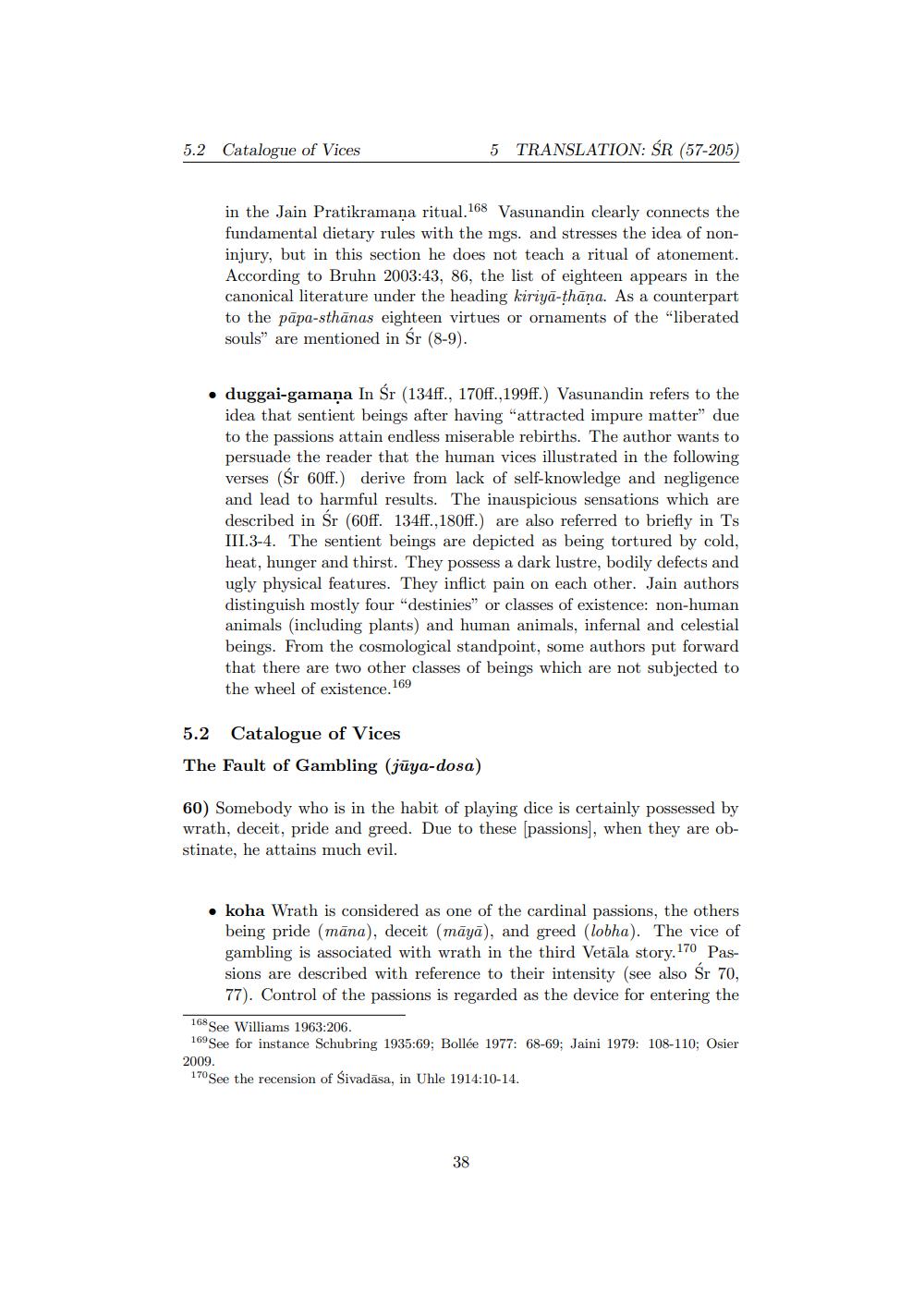________________
5.2
Catalogue of Vices
5
TRANSLATION: ŚR (57-205)
in the Jain Pratikramana ritual.168 Vasunandin clearly connects the fundamental dietary rules with the mgs. and stresses the idea of noninjury, but in this section he does not teach a ritual of atonement. According to Bruhn 2003:43, 86, the list of eighteen appears in the canonical literature under the heading kiriya-thana. As a counterpart to the papa-sthānas eighteen virtues or ornaments of the "liberated souls” are mentioned in Śr (8-9).
he heading kiriga-tighteen appears in
duggai-gamaņa In Śr (134ff., 170ff.,199ff.) Vasunandin refers to the idea that sentient beings after having "attracted impure matter" due to the passions attain endless miserable rebirths. The author wants to persuade the reader that the human vices illustrated in the following verses (Sr 60ff.) derive from lack of self-knowledge and negligence and lead to harmful results. The inauspicious sensations which are described in Sr (60ff. 134ff.,180ff.) are also referred to briefly in Ts III.3-4. The sentient beings are depicted as being tortured by cold, heat, hunger and thirst. They possess a dark lustre, bodily defects and ugly physical features. They inflict pain on each other. Jain authors distinguish mostly four "destinies" or classes of existence: non-human animals (including plants) and human animals, infernal and celestial beings. From the cosmological standpoint, some authors put forward that there are two other classes of beings which are not subjected to the wheel of existence. 169
5.2 Catalogue of Vices The Fault of Gambling (jūya-dosa)
60) Somebody who is in the habit of playing dice is certainly possessed by wrath, deceit, pride and greed. Due to these passions), when they are obstinate, he attains much evil.
• koha Wrath is considered as one of the cardinal passions, the others
being pride (māna), deceit (māyā), and greed (lobha). The vice of gambling is associated with wrath in the third Vetāla story.170 Passions are described with reference to their intensity (see also Sr 70, 77). Control of the passions is regarded as the device for entering the
168 See Williams 1963:206. 169 See for instance Schubring 1935:69; Bollée 1977: 68-69; Jaini 1979: 108-110; Osier 2009.
170 See the recension of Sivadāsa, in Uhle 1914:10-14.




